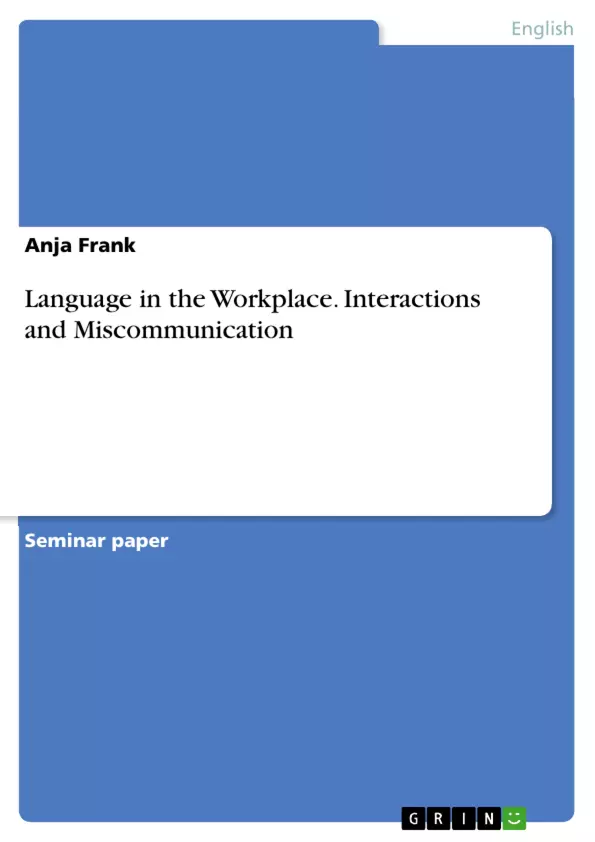This essay deals with language describing important patterns of interactions which are commonplace in the world of work. The central focus lies on the description of the different kinds of speech acts and their functions. This also involves analysing certain social relations, cultural or gender differences and variations between workplaces which influence the interactions.
The essay is based upon a research about intercultural workplace communication in Australia that was published in “Inter-cultural Communication at Work“, written by M. Clyne.
In our multi-lingual world language plays an important role in creating a particular kind of working atmosphere. Especially the workplace combines the talents of many people with different traditions, habits, ideas, cultures and languages.
But no matter if foreigner or not – when joining a new company new technical terminology and group jargon have to be learned in order to keep up the acquired norms for interaction. This is an important issue when wanting to become an accepted colleague.
Table of Contents
- Introduction
- The Interactions
- Complains and whinges
- Directives
- Commissives
- Apologies
- Small-Talk
- Miscommunication
- Closing Remarks
Objectives and Key Themes
This essay explores the significance of language in shaping workplace dynamics, particularly within multicultural settings. It focuses on the analysis of different speech acts and their functions in workplace interactions, considering factors such as social relations, cultural or gender differences, and variations across workplaces. The essay utilizes research on intercultural workplace communication in Australia, drawing data from 88 complaints, 133 directives, 73 commissives, 25 apologies, and 29 small-talks.
- The role of language in shaping workplace atmosphere and culture
- Analysis of various speech acts and their functions in workplace interactions
- The influence of social relations, cultural or gender differences, and workplace variations on communication patterns
- Exploring the distinction between exercitive complaints and whinges
- Examining the use of directives as a tool for influencing behavior and achieving specific goals
Chapter Summaries
The essay commences with an introduction highlighting the importance of language in the workplace, emphasizing the need to learn new terminology and norms for interaction. The main focus is on the analysis of different speech acts and their functions in the workplace. The analysis is based on research conducted in Australia, which provides data on various interaction sequences and their components. The essay then delves into a detailed examination of complaints and whinges, exploring their distinctions, characteristics, and their role in workplace communication. It also explores directives, highlighting their strategies and functions in directing the listener towards a desired goal.
Keywords
This essay examines key concepts such as workplace communication, intercultural communication, speech acts, complaints, whinges, directives, commissives, apologies, small-talk, social relations, cultural differences, and workplace variations.
- Quote paper
- Anja Frank (Author), 2005, Language in the Workplace. Interactions and Miscommunication, Munich, GRIN Verlag, https://www.grin.com/document/127468



